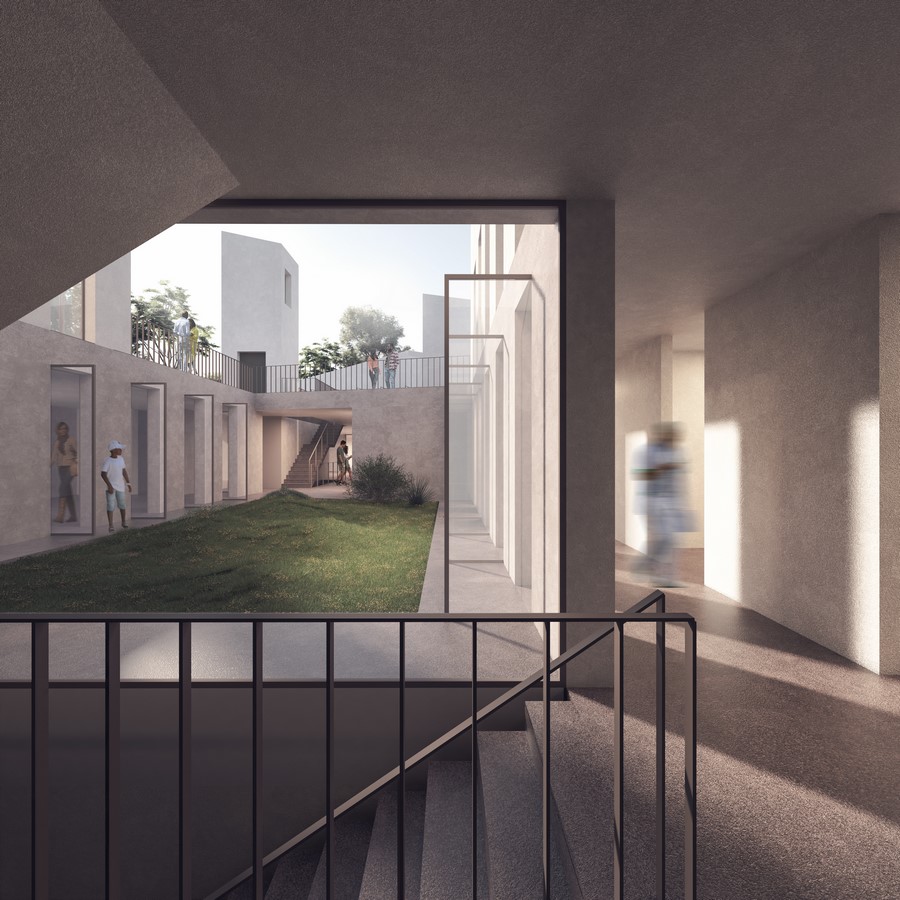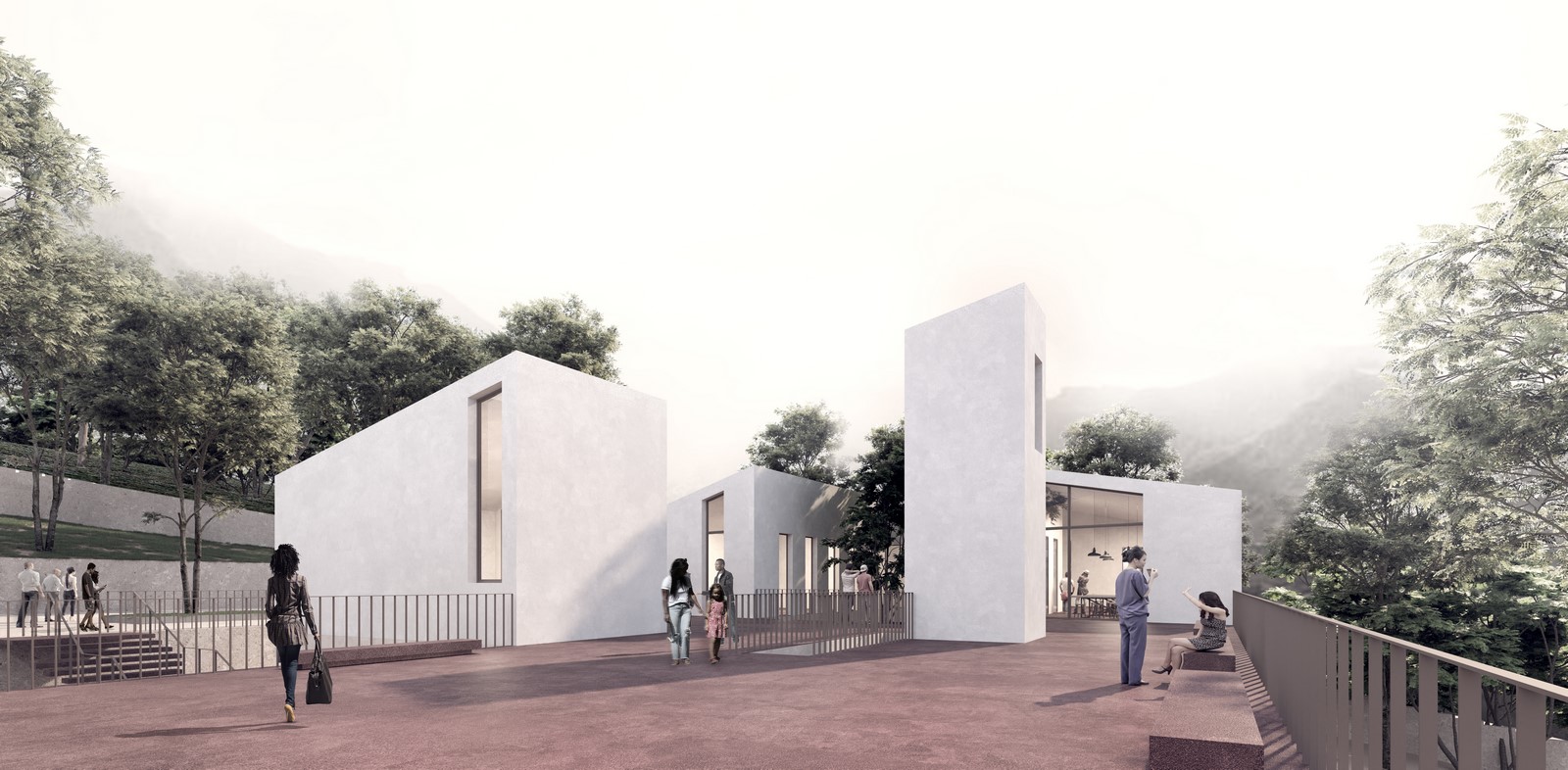Rwanda has a reputation for being one of the cleanest and now safest countries in Africa. Conservation here is taken seriously and the whole region is known as one of the most biodiverse rainforests on the continent. Acknowledging also the growth of national economy, the design of Hope Dental Clinic promoted and funded by His Hands On Africa, clearly presents an opportunity for contextual architecture and environmental awareness.
Project Name: Hope Dental Center
Studio Name: Sebastiano Baldan Architects + Nazish Pathan and Ashlon Frank
Location: Kigali, Rwanda
Year: April 2020

The proposal for the new Hope Clinic is structured on a number of strategic choices aimed for a functional facility through a sustainable and responsible design vision. The site plan is defined as a sequence of three major zones – clinic and carpark, residents and warehouse – placed in non- dispersive manner so to minimize the use of land, cutting of existing trees and groundworks required.
Attention is given to the clinic’s spatial organization, arranged around a large podium with public functions at the top and a semi-private courtyard at the bottom, which brings light into the treatment floor. The communal spaces should facilitate the spontaneous aggregation of people and instill an overall sense of community while offering break-out areas and panoramic points of view.
The distinction between the treatment and public areas is marked by a change of finish visible on the exterior: grounded and blending with the soil at low level and white colored above.
As to give the impression of a natural element which quietly grows from the earth and reaches above merging and vanishing into the sky.

Centrally positioned and detached from the clinic buzz, a smaller building houses the resident staff, connected to the main clinic via central steps and gentle ramps on the natural descent of the terrain. A small podium in the green nearby is used for meditation and for quiet gatherings.
The warehouse is located at the very bottom, slightly elevated from the road level and accessible through a ramp leading to the loading area for van-size vehicles and container trucks. Although completely separated from the clinic and residence, the warehouse offices are placed on a higher level with controlled access to a dedicated terraced area at the rear.
Emphasis is put on the building materials which should be sourced locally as much as possible so to help the local and national economy. Focus is on the use of Rwanda volcanic rock aggregates, a red-brown color stone which gives a naturally warm and vernacular look to the buildings. Equally important is the implementation of sustainable applications, i.e. passive cooling, cross ventilation, solar thermal panels for hot water, rainwater harvesting for toilet flushing and ground water recharge by allowing water seepage though permeable outdoor finishes.

Hope Dental Clinic is a clear chance to implement new building standards in Rwanda, a design that while reflecting the modernization of the country should be considerate and respectful of its own traditions and heritage.
BIO
Sebastiano Baldan (1975)
Sebastiano Baldan received a Master Degree in Architecture in 2004 at IUAV in Venice (Italy) and has a long career in architecture and design. Before establishing Sebastiano Baldan Architects in Dubai, he has held senior positions in internationally acclaimed firms and produced projects for a wide range of building types from the small scale of a private house to the large scale of urban planning.
While many projects are highly recognized public facilities, such as airports and museums, he has also completed several distinguished private projects including high-end residential buildings, food and beverage, offices and factories. Between 2005 and 2020 he has delivered award winning design in Europe, China and Middle East.
Nazish Pathan (1991)
Nazish Pathan is an enthusiastic and intellectual architect who graduated with a Bachelors Degree in Architecture in 2014 from BMSCE Bangalore, India. She was an active member of National Association for Students of Architecture successfully participating at National levels.
She has gained successful experience in the region working with established architectural practices in Dubai. Her projects include master-plans to community centers and residences with her scope extending to interior design and site supervision.
Nazish is always looking out for opportunities to research and develop Sustainable strategies in her projects with a constant urge to challenge and educate herself on local crafts and technology.
Ashlon Frank (1991)
Ashlon Frank obtained his Bachelors Degree in Architecture in 2015 from BMSCE, Bangalore, India. Since then he has gained experience working in architectural projects in private and public sectors in India and in the Middle East regions. He has volunteered on community centric projects of different typologies aimed at enhancing the conditions of urban, rural and historic settlements in Goa and Mangalore, India. He has keen interest in broadening his understanding of architecture, craft and culture and had been awarded a travel grant to Japan in his pursuit. His current interest lies in connecting indigenous and traditional building crafts to contemporary building processes which are facing stringent global challenges.














